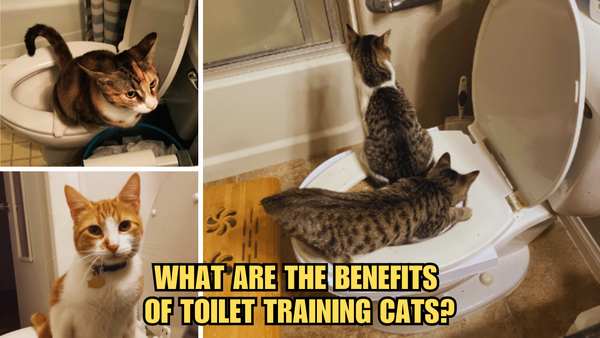When it comes to ensuring the safety and management of spaces within your home, both pet gates and baby gates serve as vital tools. However, despite their similar appearances and functionalities, these gates cater to distinctly different needs and specifications. This article will delve into the nuances that distinguish pet gates from baby gates, helping you make an informed decision based on your specific requirements.
Key Takeaways:
- Design and Material Differences: Pet gates often feature sturdier materials and may include a small pet door, while baby gates prioritize child safety with secure locking mechanisms.
- Installation Varieties: Baby gates typically require more permanent installation methods like hardware mounting, whereas pet gates offer more flexibility with pressure-mounted options.
- Height and Width Specifications: Baby gates are generally taller to prevent toddlers from climbing over, whereas pet gates vary in height depending on the size of the pet.
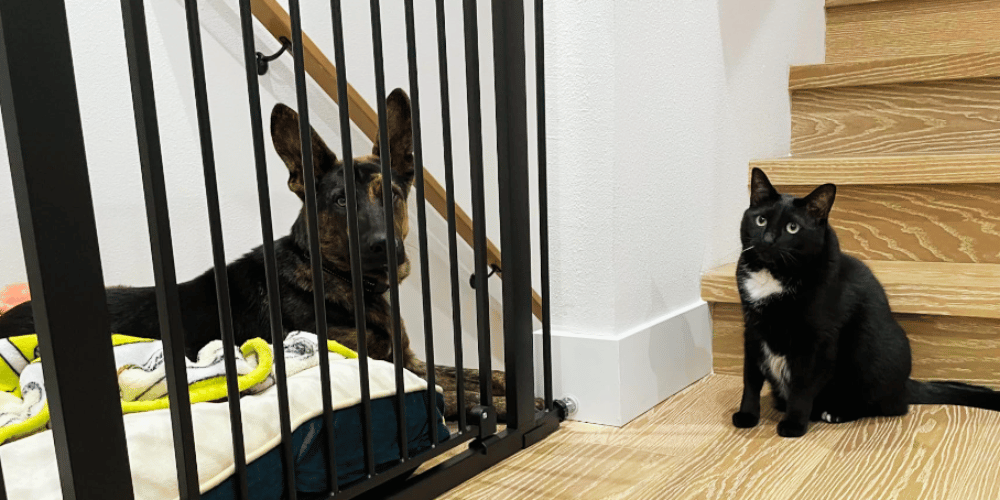
Understanding the Basic Functions
Both pet gates and baby gates are designed to create a secure barrier in your home. The primary function of a baby gate is to protect children from potential hazards, such as stairs or off-limit rooms. On the other hand, pet gates primarily aim to keep pets confined to certain areas or away from specific spaces without restricting family movement.
Material and Durability
When selecting the right gate, material strength plays a crucial role. Baby gates are often made from materials like wood or light metal, ensuring they are sturdy yet safe for contact with children. Pet gates, especially those meant for larger dogs, are typically constructed from stronger materials like steel to withstand the force of a jumping or pushing pet.
Installation Techniques
The installation process is another critical factor to consider. Baby gates often require drilling into walls for a secure fit, known as hardware mounted gates. This method is particularly essential at the top of stairs for maximum safety. Conversely, pet gates might use pressure mounted systems that allow for easy relocation and installation without leaving marks or holes in the wall.
Height and Accessibility
Height is a significant differentiator. Baby gates are generally taller because toddlers can climb, requiring heights that discourage such attempts. Pet gates vary; taller gates are used for large dogs, while shorter ones might suffice for smaller dogs or cats. Some pet gates also feature a cat door at the bottom, allowing smaller pets to pass through while keeping larger ones contained.
Locking Mechanisms and Safety Features
Safety is paramount in baby gates, which often feature dual-locking systems that are too complex for toddlers to open. Pet gates may have simpler locking mechanisms since the primary concern is not cognitive ability but rather physical restraint. Some advanced models of both gate types might include features that allow them to lock automatically or swings shut to ensure the gate closes behind you.
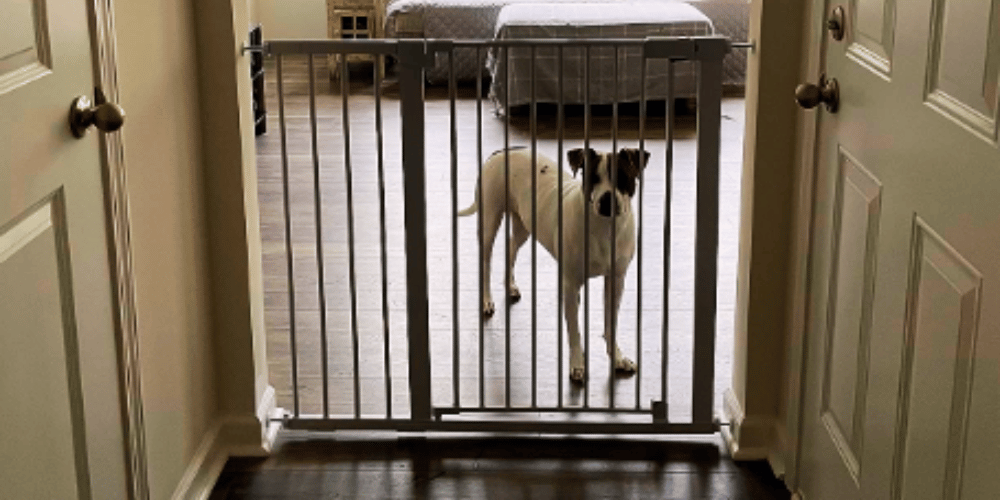
Customization Options for Different Needs
When pondering over "what's the difference between a pet gate and a baby gate," it's essential to consider the customization options available. For pet owners, especially those with large dogs, finding the right pet gate that can be adjusted to fit various openings in the house is crucial. Pressure mounted pet gates are a great solution for those looking for an easy-to-install option that can be moved from one place to another without much hassle. These gates typically expand and lock into place, providing a secure barrier that can be set up in doorways or hallways.
On the other hand, baby gates often require more permanent solutions, which is where hardware mounted pet gates come into play. These gates are screwed into the wall, making them an excellent choice for top-of-stair installations where safety is paramount. Unlike pressure fit gates, hardware-mounted gates are designed to handle the adventurous spirit of little ones who might push against the gate. Both types of gates offer different locking mechanisms; some locks automatically to ensure safety, while others might need manual operation, depending on the design.
Adjustability and Flexibility
When considering what's the difference between a pet gate and a baby gate, it's crucial to explore their adjustability and flexibility. A pressure-mounted gate, often used as a safety gate, is a popular choice for both uses due to its easy-to-install nature. These gates can be expanded or contracted to fit openings of various sizes, from narrow doorways to wider hallways. This feature is particularly beneficial for families living in homes with non-standard doorway measurements, ensuring that the gate functions effectively on opposite sides of a space.
Flexibility also extends to the portability of the gate. Unlike fixed metal gates, pressure-mounted gates can be easily moved from one location to another within the home. This makes them ideal for parents and pet owners who need to secure different areas at different times. For instance, during the day, a gate might be used to block off the kitchen, and at night, it could be moved to secure the top of the stairs. This versatility is a significant advantage for managing the safety of both small dogs and little dogs, as well as babies, as their need for supervision changes throughout the day.
Impact on Home Decor
When considering what's the difference between a pet gate and a baby gate, it's essential to think about how they blend with your home's aesthetic. Pet gates often come in various styles, from rustic wood to modern metal, ensuring they don't just serve a functional purpose but also complement your interior design. Whether you choose a carved wooden gate that echoes the warmth of your living room or a sleek, metal gate that aligns with a more contemporary look, the right choice can seamlessly integrate into your home without being an eyesore.
On the other hand, baby gates tend to prioritize safety and functionality over style, often featuring a more utilitarian design. While safety is paramount, this doesn't mean they can't be stylish. Many manufacturers are now producing baby gates that are easy to install and that also keep up with modern home decor trends. These gates ensure that parents don't have to compromise on style for functionality, offering designs that are as pleasing to the eye as they are effective at keeping little ones safe.
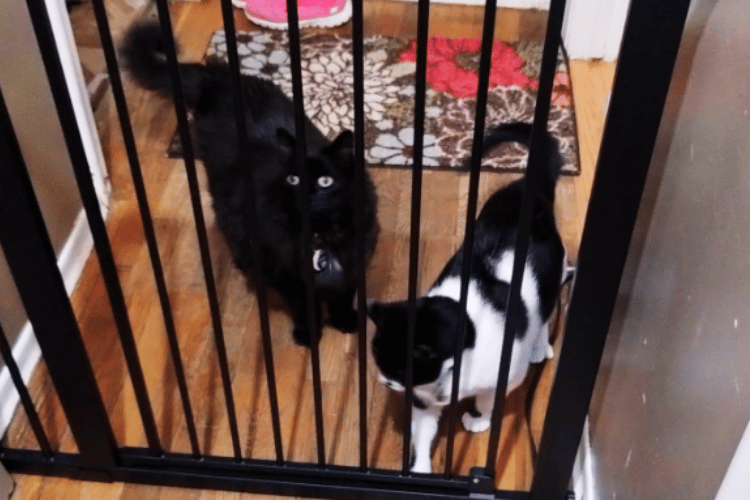
Compatibility with Various Openings
When considering what's the difference between a pet gate and a baby gate, it's crucial to think about the variety of openings they are designed to secure. A pressure-mounted gate, often used for both pets and babies, is a popular choice because it can be easily adjusted to fit openings of different widths without the need for drilling or permanent fixtures. This type of gate typically includes rubber bumpers that protect your walls and ensure a snug fit, making them ideal for doorways and hallways.
However, when selecting a dog gate, especially for larger breeds, it's important to consider the strength and durability of the gate. While pressure-mounted gates are convenient and versatile, they might not always withstand the force of a large, energetic dog. In such cases, hardware-mounted gates, which are screwed into the wall, provide a more secure solution. These are particularly recommended for staircases or other critical areas where a sturdy barrier is essential to prevent accidents.
Walk-Through Convenience
One of the standout features that differentiate various gate types is the presence of a walk-through door, which adds a layer of convenience for the user. This feature allows adults to pass through easily without the need to remove the entire setup, which can be a hassle, especially if the gate is used frequently throughout the day. Walk-through gates typically feature a swinging door that can be operated with one hand, a boon for busy parents or pet owners whose hands are often full.
Moreover, the design of these gates takes into account ease of use while ensuring safety. Many models come with a double-locking system that is simple for adults to operate but challenging for children and pets to open. This feature is particularly important in maintaining the safety aspect of the gates while not compromising on functionality and ease of access. Whether it's a late-night snack run or a quick need to step into another room, the walk-through gate proves its worth by blending security with convenience.
Innovative Features for Enhanced Usability
Exploring the innovative features of pet and baby gates can further illuminate what's the difference between a pet gate and a baby gate. Pet gates often include small doors or openings that allow cats or smaller pets to pass through while keeping larger dogs contained. This feature is particularly useful in homes with multiple types of pets, ensuring mobility for smaller animals while maintaining the necessary restrictions for larger ones. Additionally, some pet gates are designed to be extra tall to prevent agile dogs from jumping over.
Baby gates, conversely, focus heavily on child safety. Many are equipped with dual-locking systems that are easy for adults to operate but difficult for children to manipulate. The pressure-mounted gate design is popular among parents for its ease of installation and removal, making it ideal for temporary setups or for families who rent their homes. These gates typically fit openings in a range of sizes and come with extensions to ensure a snug fit, providing peace of mind for parents and safe exploration spaces for curious toddlers.
Special Considerations for Large Dogs
When tailoring solutions for large dog owners, the choice between dog gates and other gates becomes more pronounced. Large dogs require a sturdy, durable gate that can withstand potential jumping or leaning. Metal gates are often the go-to choice here, as they offer the strength needed to hold back a hefty pet without bending or toppling over. These gates are typically designed with vertical bars that deter dogs from attempting to climb over, providing an added layer of security.
Moreover, the height of the gate is a critical factor for owners of large dogs. A gate that is too short might invite a large dog to hop over with ease, rendering it ineffective. Therefore, selecting a gate that fits the height requirement of your pet is as crucial as ensuring it fits the width of your doorway or hallway. This consideration helps eliminate worry for pet owners, knowing their furry friends are safely contained in their designated space, allowing for peace of mind and safety throughout the home.
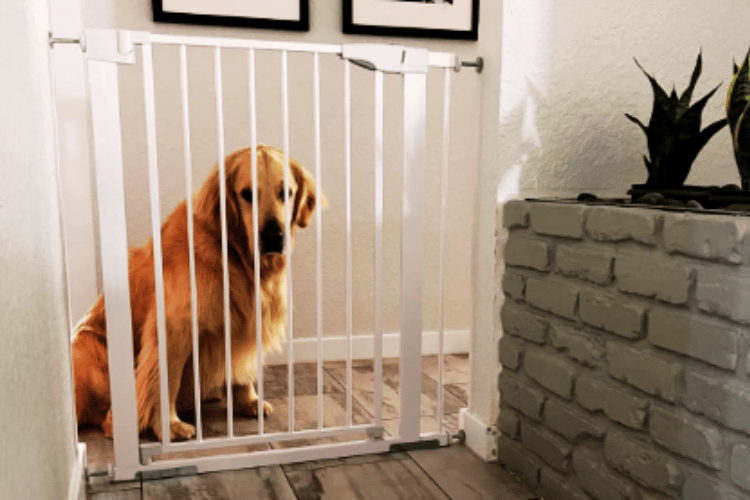
Safety Features and Material Choices
Safety gates, whether designed for pets or babies, prioritize the safety of your loved ones. The entire gate structure, especially in models designed for safety, often features a sturdy build. Metal gates, including steel gates from brands like Cardinal Gates, offer durability and strength, ensuring that the barrier remains intact even when faced with a curious puppy or an exploring toddler. These gates are not only functional but also come with various locks and safety features that enhance their security.
Material choice plays a pivotal role in the longevity and functionality of the gate. For instance, metal gates are suitable for containing large dogs due to their robust construction and ability to withstand pressure. In contrast, retractable gates, which are often made from mesh, provide a lightweight and less obtrusive option for areas where you might want to maintain the aesthetic appeal of the space. These gates are also easy to operate, making them a convenient option for busy parents or pet owners who frequently pass through the gated area.
Versatility and Placement
Pet gates can often be found in various designs, including freestanding gates that are perfect for doorways or hallways and don't require any installation. Baby gates, however, are usually designed for more permanent placement, and their design considers the need for adults to pass through easily, often featuring a door that adults can open with one hand.
Special Features for Pet Owners
Owners of multiple pets might opt for gates with varying features like a smaller dog door or adjustable sizes to block off areas for different types of pets. These specialized gates provide flexibility that typical baby gates do not offer, catering to the diverse needs of a household with multiple pets.
Choosing the Right Gate for Stairs
Stairs are a common area where both types of gates are used. For babies, a hardware mounted gate with no threshold to trip over is ideal. For pets, especially agile or large dogs, you might consider an extra-tall, hardware-mounted gate to ensure they cannot jump over or push it down.
Ease of Use and Daily Functionality
In daily use, ease of access is crucial. Baby gates should allow adults to pass through easily, often operating with one hand. Pet gates might offer different mechanisms, like sliding or lifting, which can be simpler but might require two hands, making them less convenient if you're carrying something.
Aesthetic Considerations
While safety and functionality are the priorities, aesthetics also matter. Baby gates tend to blend with home decor more seamlessly, offering finishes that complement modern homes. Pet gates might be more utilitarian in appearance, focusing on durability and function over style.
Summary
Understanding the difference between a pet gate and a baby gate is crucial for ensuring the safety and functionality of your home. Baby gates are designed with child safety as the priority, featuring taller designs and more secure installation methods. Pet gates, while also providing safety, offer more flexibility in installation and features to accommodate different types and sizes of pets. Choosing the right gate depends on your specific needs, whether it's keeping a curious toddler safe or a playful puppy contained.
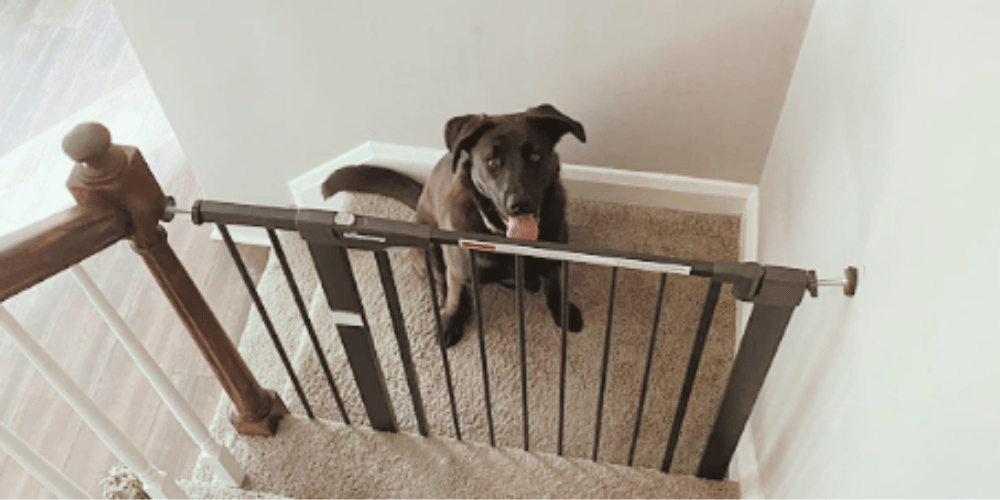
FAQ
Q1: Can I use a pet gate for my toddler? A1: It is not recommended to use a pet gate for toddlers as they might not meet the safety standards required for childproofing, such as sufficient height and secure locking mechanisms.
Q2: Are pressure mounted gates safe for use at the top of stairs? A2: For maximum safety, pressure mounted gates are not recommended at the top of stairs. Hardware mounted gates are the safer choice for these locations to prevent accidents.
Q3: How do I choose the right height for a pet gate? A3: Consider your pet's size and jumping ability. Taller gates are advisable for larger or more agile pets to prevent them from jumping over.
Thank you for visiting LegitLists we hope this helps you make a legitimate choice!






